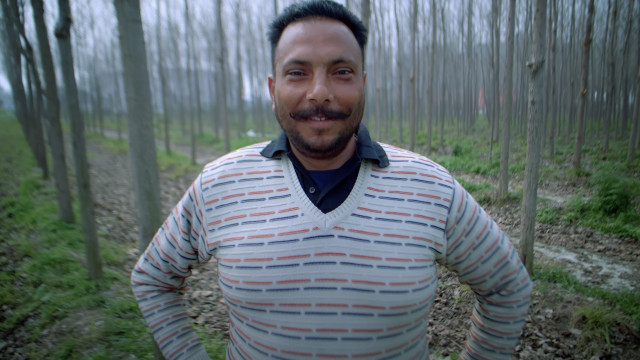Retrain Kindness With Meditation

Connecting with the innate is something most people never experience, but for Michaela O’Driscoll, her religious upbringing helped push her to create a lifetime bond between meditation and herself. It was an event in her life as a teen that caused her to seek solace outside of the Catholic church. The result is more than 50 years of experience in personal practice, many of those as a meditation teacher.
Here, O'Driscoll talks undoing our hurried mindset, finding her own meditation style, and why the heart is a big part of her practice.
Q: How did you first discover meditation?
A: It feels like something I’ve been doing my entire life. Through my mother, I was raised Catholic, and prayer was really important. It used to drive me nuts when we sat down to do rosary, but it taught me presence, and that has stayed with me all my life. Later on, through yoga, I discovered several other forms of meditation. In 2012, I had a traumatic experience that resulted in me having PTSD and I had to recover from that. I made it my commitment every day to do my practice so that my vibration and my healing would be really strong, and that brought me closer to the practice of presence, embodiment, and meditation.
Q: How did you define your meditation style — was it part of a transition from Catholicism for you?
A: When I was 15, my mother was not happy with me, but I couldn’t go to mass anymore. For me personally, I’ve always described myself as more spiritual than religious, and after observing behaviors that didn’t align with my spirituality, I decided it was time to move forward on my path to innate embodiment. My style of meditation is much more about embodiment and a sense of coming into the heart and body and honoring your emotions. It is also about coming into a place of presence and not forcing it to happen. Instead of striving to zone out or block thoughts, I encourage my students to stay present. My practice is more about cultivating the witness, and witnessing thoughts. When we come into a place of practice, with the thousands of thoughts we have daily, we can see the thoughts for what they are and they can be seen as little children.
As the lesson deepens, it’s like a computer that’s been put to sleep. It’s the nature of the mind to have thoughts, and when I teach, I get people to really feel their body and come into their body, and not zone out during the meditation. If there’s any ache or pain, they should feel it and soften into it. My practice is very feminine based. A key for it is breath. Your breath can be your anchor.
Q: Why does your style work so well for you?
A: My practice has always been about health and awakening, primarily due to my background as a homeopath. In the past few years, it’s been a more feminine embodied practice. I attended a prayer practice with Jennifer McLean that was focused on activating love. That practice was part of the impetus for truly defining my style. It’s also about remembering our nature and coming back into source — something that children have innately, but as we age, we get programmed out of it through stress and worry. Another thing about presence practice is that it’s an investment in life, in our bodies, and the world. The heart is a really big part of my meditation practice.
In my most recent practice, a movement into goddess practice, we all begin to empower each other. I like what the Dalai Lama said a couple of years ago, that the world will be saved by the Western woman, and the key is compassion. Activating and cultivating compassion is our nature, and then we become happy from that compassion. A big part of meditation practice is connecting to source.
Q: For people who are new to meditation, what guidance would you give them while searching for their own style?
A: The first thing to think about is simplicity, and to recognize that it’s something simple and innate in all of us. We’re all really different, so honor yourself and go to simplicity. It’s a practice of coming back to ourselves and coherence, away from stress and being run jagged. It’s our nature and humanity. You need to find what works best for you. A starting point is kindness to self and finding compassion for yourself. While you need to have a level of commitment for the practice of meditation, be sure to seek simplicity in your style. For some, it could be dancing or painting, but it’s important to not force the traditional setting of sitting still for meditation. Meditation practice is a gentle undoing of that hurried mindset.
Q: How can someone truly connect with themselves through meditation?
A: What’s innate is our humanity. If I'm doing a one-on-session with someone who's feeling really sad, I have them empty out those negative thoughts at the beginning of the practice. Start the meditation session with what is causing you to be pent up. Once you start coming into a relationship with yourself, you generally will start to feel better, and once that feeling begins, you’ll have an awareness of that innateness.
Our common humanity is that we all wish to contribute, and we are all made of love. And when we feel down, then that’s our starting point. To really honor however we’re doing and bring kindness to others, we first need to look inward and lead our own practice with kindness to self.
Try this free short meditation on how to Boost Your Mood with Gratitude, by meditation teacher Almeiri Santos.
Header photo: PeopleImages/E+/Getty Images







